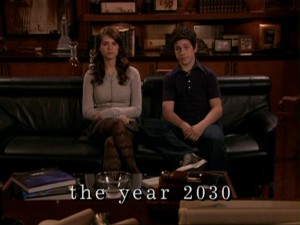It was exciting going on an excursion the first week. We learned about how to research to find resources. It was definitely something I didn’t think was necessary before coming to the state library but definitely in higher learner like honours or PHD’s it might be more essential. As of yet, I don’t know what exactly what my piece will be however I am narrowing down on building 20 or maybe even the fig tree could be interesting as well. However, if I chose to go down the researching path I think the session would be very useful.
Category Archives: Symposiums
Week 11 Reading
Introduction: Media as Historical Subjects
- “Media are so integral to a sense of what representation itself it” – If people in 100 years times were only to look at our media artefacts as representation of our generation like what our newspapers were about, the internet, what was on youtube (if it still exists), what would they think?
- Gitelman defines history of not just what happened in the past but also the varied practice of representing the past
- New media also lets us see a new way jobs get constructed
He also defines media as ‘socially realised structures of communication, where structures include both technological forms and their associated protocols, and where communication is a cultural practice, a ritualised collocation of different people on the same mental map, sharing or engaging with popular ontologies of representation.”
- It takes into account that communication and media are social – socially influenced as opposed to the technological determinist view
- Their histories are not just social but also cultural – their original intent or use doesn’t say the same as when someone invented it or how it just simply evolved from another form of media – it’s more complex than that
- In this context, protocols include a “vast cluster of normative rules and default conditions” however these protocols are socially constructed but can be influenced by the media form
- The underlying purpose of media is to communicate
Other students blogs
I loved looking at Jess’s blog this week. It’s got a clean and minimalist layout and she discusses how she got Ello. By the looks of it (the one screenshot) it looks pretty good and definitely liking that it doesn’t have ads everywhere like Facebook.
If you are still waiting for your invite –> click here
Mia’s post gave me another insight when thinking about databases. Metaphors always make these easier to understand.
“Algebra is really the basis for the formulas and algorithms which control computers and in turn databases.”
Seonaid has some great take-away points from the week 11 readings which I’ve been having trouble understanding as well. I liked her comment at the end stating her list is actual a story.
Lev Manovich: Databases
What is a database?
As Elliot defined in this afternoon’s symposium it’s an “organised collection of information”. So technically an encyclopaedia is a database however usually when we do think of a database we think online or in some relation to technology. Even as Adrian mentioned our blogs are databases.
The topic of narrative come back again in this reading. Manovich’s viewpoint is that a database is a list not a story. They are in opposition.
–> Side Note: Is it us that wants to make everything a story? Our own ability to fill the gaps? Do we just feel the need to understand, to make meaning out of everything and the story is just the vehicle we use? <–
Lists and databases don’t have a cause and effect logic to them they are non-sequential.
What is more surprising is why the other end of the spectrum— narratives—still exists in new media.
This line stuck with me because just because it is on the other end of the spectrum doesn’t mean that it shouldn’t exist. However, do narratives even belong in new media? (which he argues are all underpinned by databases) Are we just trying to push a square peg into a circle? If we stop forcing the old form to fit we can see what else there might be.
Manovich, Lev. “Database as Symbolic Form”. Database Aesthetics: Art in the Age of Information Overflow. Vesna, Victoria, ed. Minneapolis: University Of Minnesota Press, 2007. Print. 39-60.
Symposium #11
One of the last discussion points which was made was about the difference between design students and media students. The fundamental difference is in the way we are taught/learn and consequently how style of thinking.
As brought up, design thinking is becoming the ‘fashionable’ thing in business schools as it brings in a new perspective. Designers are taught to engage and make things through doing. They are trained to think in terms of making things that will have some kind of effect, an effect on the future. Cultivating a ‘What if?’ thinking to explore different ideas for the future and also encourages problem solving. So in turn they are a forward looking practice.
On the other hand, humanities subjects like media are more grounded in history and the understanding of the past. The focus on the past and leave the future abandoned. What the teachers are trying to do is move us past the technical skills and into the more conceptual thinking and problem solving. Something that takes time to build on and develop. Technical skills like editing and camera techniques are important but easier to learn. Another major difference which was brought up was that design is now very collaborative and edit and edit and edit. They show their work from the beginning and get critic on it. While perhaps thats not always the case with the humanities and we guard our work more. Although in this course I have found that feedback and peer/teacher critic has been emphasised ALOT. The new studio modal at RMIT is meant to be part of moving us forward into a method of making to see what we can do and what it can look like in the future. Soon we won’t be looking in opposite directions anymore.
*Image via Flickr credited to Susanne Nilsson
Symposium #10
Revisiting last week’s symposium I wanted to recap on some of the points discussed about the essay and the importance of feedback:
Essay
- In relation to our assignment: To start to write differently, to even start exploring using different forms
- A tip was to start with the traditional essay form than start breaking off into different mediums (video, audio etc.)
- Academic writing is evidence based knowledge claims
- Although they can still be subjective, be personal e.g. use I, relate it to yourself
- We need to be critical not just reflective and engage with ideas to make an argument
- Refining the topic: The (opposite) cone shape – to start broad and explore and then slowly narrow down
Collaborating:
- Is the basis of the media industry
- Continuing making and re-making of projects – sharing and getting feedback from your peers – basis of how we improve
- Not to just show things when you think it’s ‘perfect’
- Blogs – “public making, public writing, public learning”
Other Student’s blogs
Evan’s blog post called ‘Can you hear the revolution?’ showed that CDs are going down, Vinyls up and downloads being the steady stream. As he states vinyl sales have gone up by 40% in the first half of 2014! The figure is surprising although a lot of my friends have been buying more vinyls or record players lately. It follows the retro trend of making old things cool again.
I came across Ellen’s blog which led to –> Kenton’s and Kiralee’s blog posts also on our upcoming assignment. This assignment has been difficult to really focus on what we should be writing on and how we should be presenting it. Mainly because it’s completely different to a ‘traditional’ essay format which we are used to and I get it, that’s the point. Overall, Networked Media has just questioned, redefined, turned over my whole idea of learning in any traditional sense.
On a completely different note, Jane’s blog post about Wikipedia being a connector was a really short and sweet way to summarise it. She got from Hawaii to the Black Death – two things that seem completely unrelated but really there were only three stops between them.
Reading week #9
The idea of the Long Tail structure is argued as the new marketplace. Take iTunes as an example as they have practically unlimited storage space especially in comparison to retail stores. It starts to look something like this:
“But Vann-Adib, like executives at iTunes, Amazon, and Netflix, has discovered that the “misses” usually make money, too. And because there are so many more of them, that money can add up quickly to a huge new market.”
As this style begins to emerge more especially with the Internet what are the down sides?
The people who run the market or organisation would be making a lot more than everyone else. Everyone can still make a profit however the gap between the individuals and the organisation or company who is running the system.
Symposium Week #9
Is a network just many webs?
This was the question I asked in our last tutorial class.
In terms of nodes I thought that the web was the same thing. I thought of the web in terms of social webs or networks which would be a network. When we talk about webs it is more of a concept of the ‘Internet’. When I thought about it in terms of if there were two Internets would they compete against each other?
If webs just made up many networks that all connected together. Betty brought up that they would then compete against each other. Do networks have to work with each other to make it better or just have some kind of relationship?
I guess the important thing to remember that the concept of the web means that there is a centre. However if each node was a centre then they would compete against each other rather than work together.
Exploring Student blogs
I find that looking through other student’s blogs is a great way to get another opinion or perspective on the reading, symposium or even things unrelated to networked media.
This time around Stephanie wrote about the idea of weak links is how we connect to other ‘hubs’ or social circles as well. She relates it to a real life experience with her friend which for me seeing how it could apply in real life is a great way to understand new concepts. How weak ties or acquitances are essentially how we extend our network beyond just our immediate circle who will usually know each. Usually you will get job opportunities or be able to reach more people through these weak ties.
Mia’s post ties into my last post about if technology is neutral or not. She seems to come up with the same conclusion as well that technology isn’t neutral.
Mia also linked to Evan’s blog who liked the idea that about binary opposites in relation to the term neutral. Using the example that our understanding of ‘day’ links to what we know about ‘night’. Which was a really valid point and links back to the idea that words meaning are in its relationship to other things. We talked about this recently. Seems like things come full circle.


